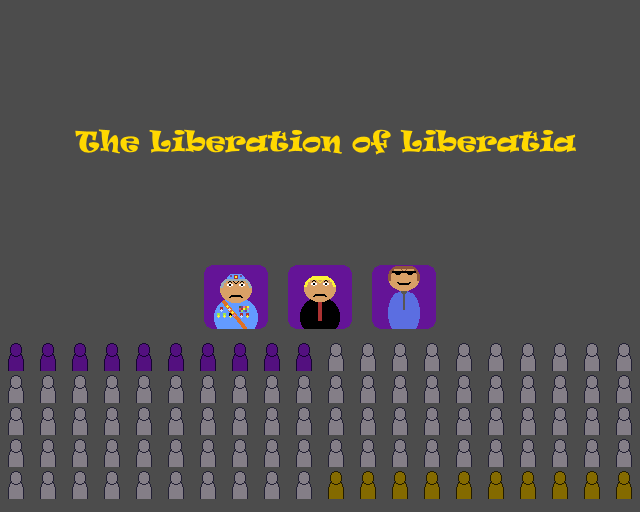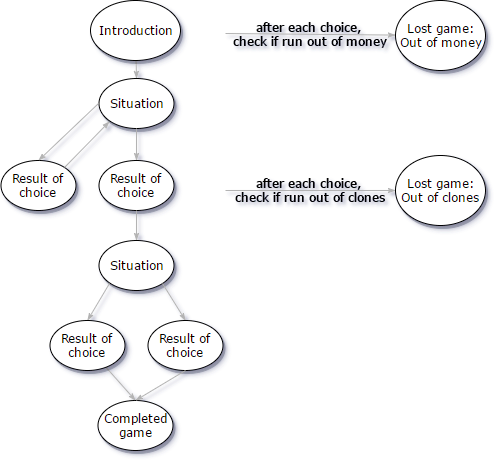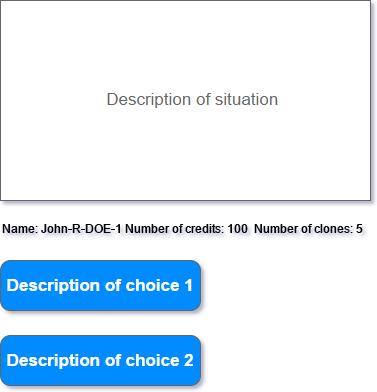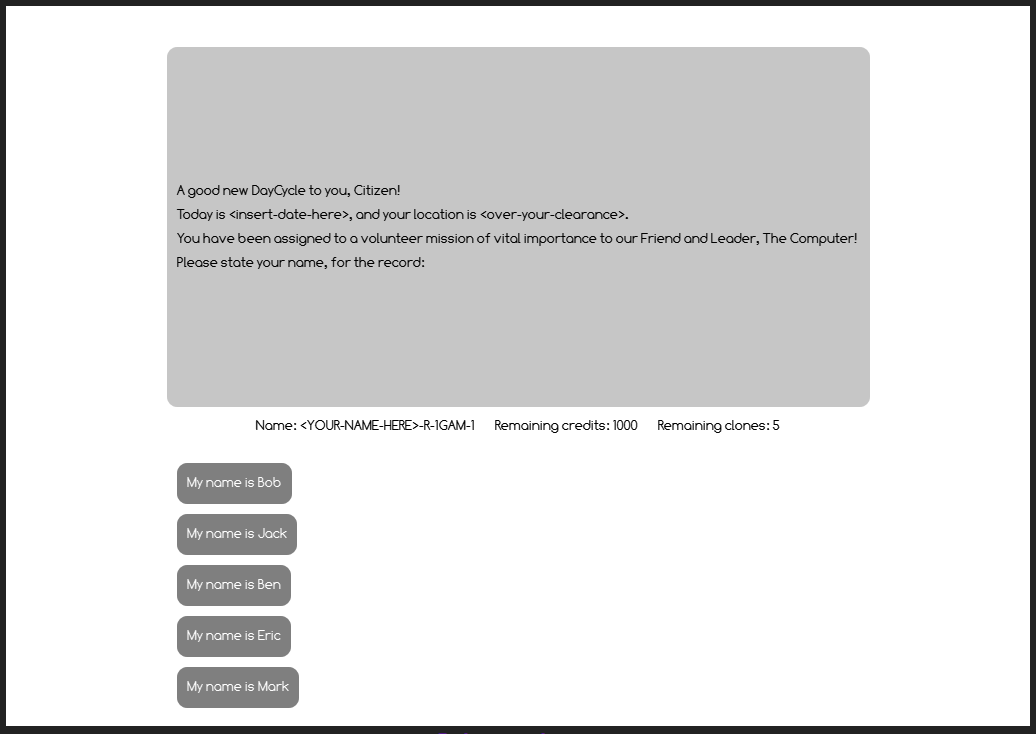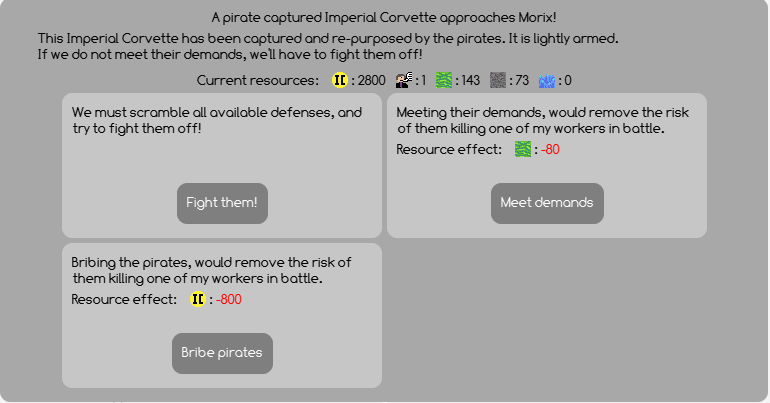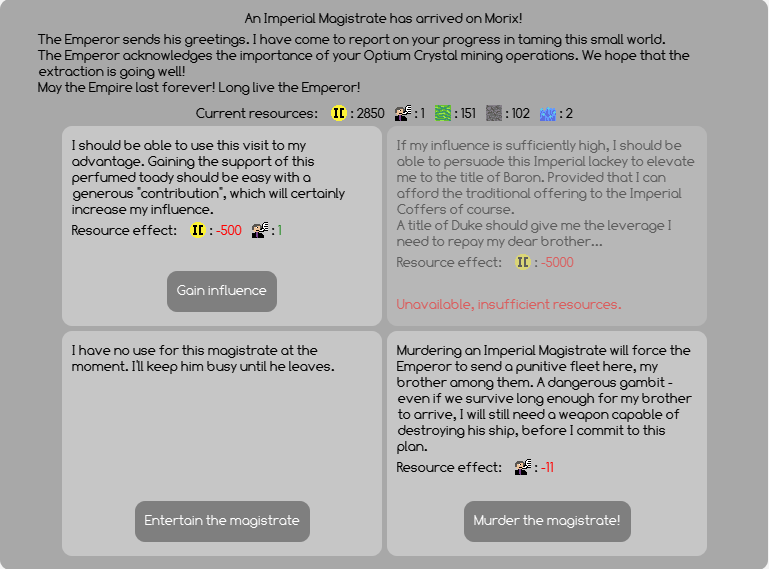My Ludum Dare 39 game
I participated in Ludum Dare 39 this weekend, and made a new game. Just as last time, I decided to participate in the 78 hour Jam instead of the 48 hour Compo. While I was still adhering to all Compo rules, this meant that I could make a strategy game, and still have some time left for polishing the final game.
This time, the theme was "Running out of Power". During my brainstorming, I decided to interpret the word "power" as political power. From that, I then decided to make a game about overthrowing an oppressive government. The player weakens the regime by converting the population to their side, which ties in with the "Running out of Power" theme.
As in my previous LDs, I developed the game in Java, using the LibGDX framework.
Brainstorming
Due to the scale of the idea, I decided that the genre of the game should be a strategy game. Since that genre is more complex, I also decided to keep the mechanics simple, by implementing the game as a "one action per turn" turn-based game, with alternating turns between the player and the AI-controlled regime.
In my original brainstorm, this would happen by gradually taking control of various government departments, and then finally confronting the leader. But with a bit of prototyping, it became clear that this would take too long to implement properly. Instead, I simplified the scope a bit.
I kept the "population as a resource" element from my initial concept as the core element of the mechanics. As the game goal was still to overthrow the regime, I also needed to decide how to create that as an antagonist. Keeping the idea of overcoming multiple obstacles from my initial brainstorm, I decided that the antagonists should be three overlords instead of one.
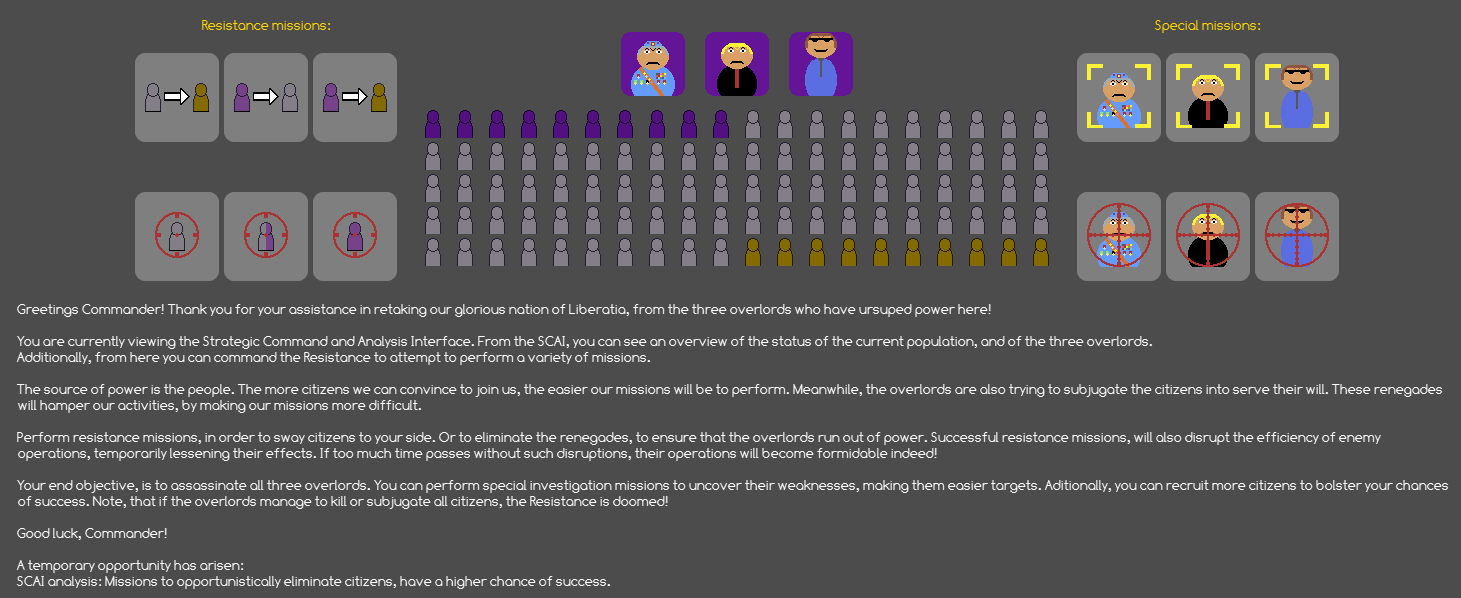
Designing the game
By performing this simplification, the game concept was distilled into two aspects, that the game mechanics needed to cover: A way to get/lose the resource of the game (i.e. the population), and a way to defeat the antagonists.
The base mechanics in my turn based game, was to let the player choose one action per turn. So I mapped these two aspects directly into the actions that can be performed. Firstly, a category of actions that affected the population resource, i.e. gaining control over them, making the opponent lose them, or removing them from the game entirely. And secondly, a category of actions used to affect the antagonists.
The antagonists respond after each turn. Their actions affect the population in the same way as the player. I.e. taking control, making the player lose control, or removing the population from the game. This also introduced a lose-condition. The game is lost if the antagonists control all remaining population.
I decided, that each type of action would have a base percentage change of success. In order to have a purpose for the population resource, this chance is boosted the more population the player controls. It is also lowered by the amount of population controlled by the opponent.
Lastly I added some extra features for variety. Each round has a random type of action gain a bonus, if attempted. The antagonists' chance of success become higher over time (reset by a successful action performed by the player). And you can perform "investigate"-actions against an antagonist, which give a small permanent bonus to later attempts to depose him.
Finally, some music!
In my previous LDs, music has always been on my TODO-list. But it always ended up being out-prioritized by other features. This time I planned on using 6 hours specifically on sound and music, and prioritized it as a "must-have" feature. So for the first time in seven Ludum Dare participations, I ended up with having actual music and sound for my game! I'm pretty happy with finally reaching that personal milestone. Next on my list: Making good music 😉
Play the game!
Try "The Liberation of Liberatia" now!
